Neil Warnock is 74 years old, but retirement doesn’t seem to interest him just yet, with the football legend currently lending his service to Huddersfield Town in the EFL Championship. Warnock currently holds the record for most promotions in English football, with eight, but this season sees his expertise being put to use in saving Huddersfield from relegation to League One.
Mark Fotheringham was the club’s last permanent manager before Neil Warnock returned, with the Scotsman being relieved of his duties after winning just five of his 21 games in charge, but Warnock’s record already makes for a more positive reading with the Yorkshire club winning four of their 10 games under the veteran. This record includes the Terriers’ current run of five games unbeaten – only Premier League-bound Burnley have produced better form in the last five games.
This resurgence has put Huddersfield back in control of their future, with the club now three places and two points above the relegation zone.
This tactical analysis will look at how Warnock has managed to rejuvenate this side in attacking transitions, with an analysis of the tactics implemented by the ex-Premier League manager. We will also look at some of the data from Warnock’s most recent five games in comparison to Fotheringham’s final five, to give us a statistical representation of Warnock’s impact.
Formations

The image above paints a picture of a team that lacked consistency in their pre-Warnock days, using a variety of formations over the course of the season, but the positive results rarely followed. In his opening 10 games, Warnock seems to favour 4-2-3-1 more often than not, although they do deploy a three/five at the back shape when coming up against a team doing the same thing.
Low block
Fundamentally speaking, Warnock hasn’t come in and made wholesale changes when it comes to tactics. Prior to his arrival, Huddersfield were no strangers to conceding the majority of possession and doing hefty amounts of defending in their own half. That is still the case, and frankly, Huddersfield’s defence hasn’t seen a drastic improvement in terms of pure numbers, but Warnock has improved the overall effectiveness of their defending in a low block, both as a unit and individually.

The Terriers aren’t afraid to welcome possession into their own half and have a somewhat unique method of defending against it. Width in defending seems to take priority over a structured shape, which we will discuss in more detail later in the analysis, but essentially their primary target is to block/limit the opportunity for the opponent to make progress up the pitch.
The image above shows us this, but Warnock’s side rarely shape up the same way every time when defending oncoming possession, but there is a method to this madness. Take the highlighted midfield four, for example – Town were playing a 2-3 midfield shape on paper but adopted a flat midfield four to halt Middlesborough’s attack. The reason the midfield became a flat four is that the remaining member of the unit was positioned deeper to mark an opponent beyond the flat-four, adding defensive security.
The striker often remains central, rarely leaving that post, applying minimal pressure in central areas – his job isn’t to rush the opposition, Warnock wants him to remain deeper than the opposition central players that he presses, rather than being ahead of them, providing defensive insurance to the midfield four.

When the opposition’s shape indicates a possession-based build-up, Warnock wants his team to remain compact in the initial stages, with wide pressure being introduced in their own half. As a result, we often see the wingers come inside to make a narrow three-man unit with the striker.
We can see this demonstrated above, and as you can see, the pressure is still minimal at most. The wingers’ job is to slightly increase the pressure if the opponent on their side receives the ball but seems to allow the central man time on the ball, not jeopardising their position. The striker remains slightly deeper than his wide teammates – either to mark an opponent or to simply occupy the space.

As promised, the discussion on a lack of typical structure/shape from the midfield when defending. Usually, when teams defend with a mid/low block, you will see a shape that resembles a compact version of their formation on paper, but that isn’t the case with the Terriers.
We identified width as a key component for Town’s defensive tactics, but that width varies depending on the situation. What’s more, they tend to favour the job of marking opponents man-for-man rather than being set up on a zonal basis. You can see this above – there is no real shape to that unit, but individually, they’re marking opposition passing options.
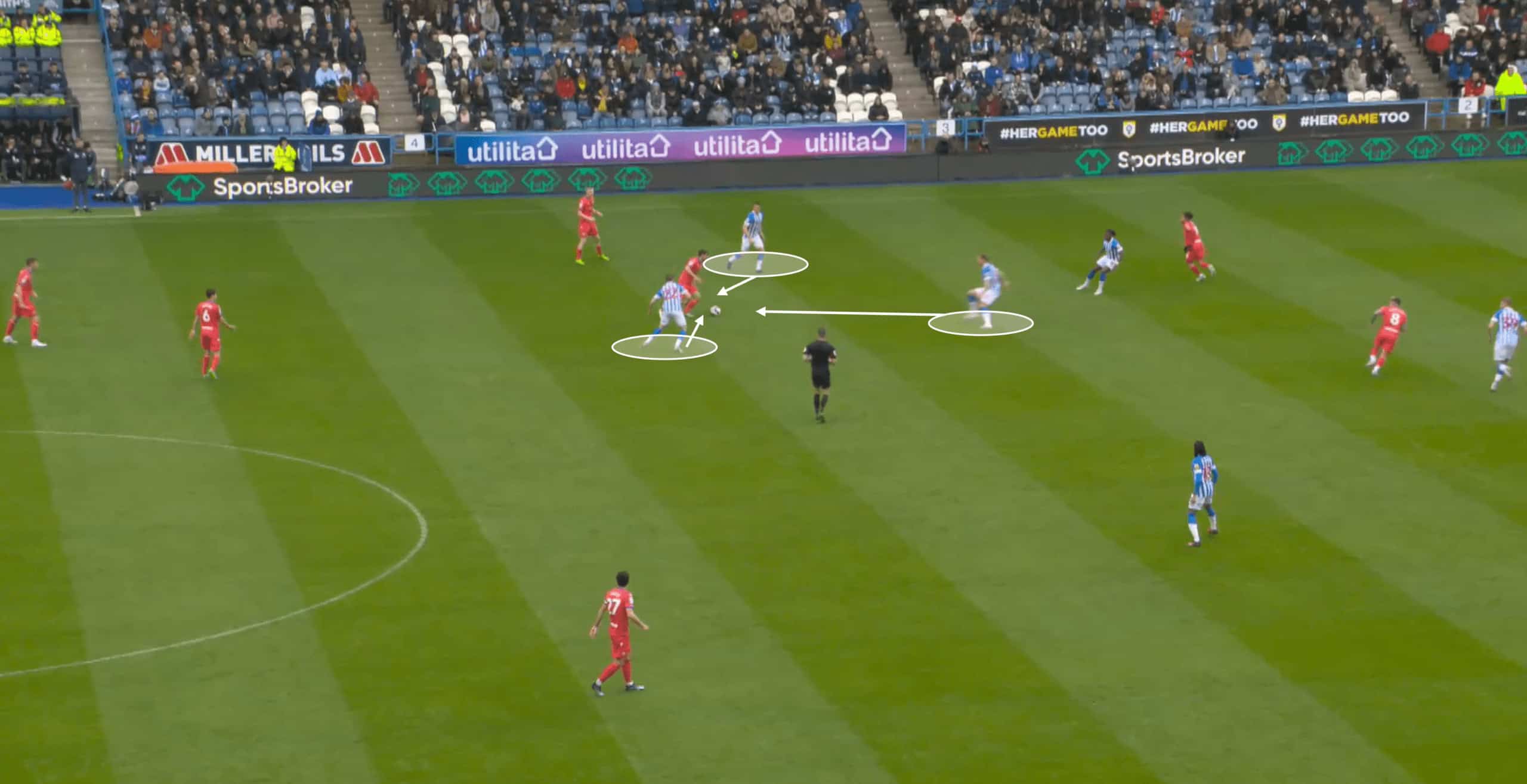
As mentioned previously, Huddersfield tend to introduce pressure in wider areas when the opponent reaches the edge of the final third. They look to close down the man on the ball while isolating him to eliminate any forward passing options. Additionally, once the presence is heavy enough to do so, Huddersfield will swarm the ball to try and force a turnover – this usually involves the winger and two closest midfielders.
Using attacking transitions as their primary weapon
We have selected attacking transitions for analysis as it is a vital part of Huddersfield’s tactics, but also because it goes hand-in-hand with the low-block defensive tactics. Since Warnock’s arrival, the Terriers have been much more effective in front of goal, with large thanks going to how they execute their attacking transitions.
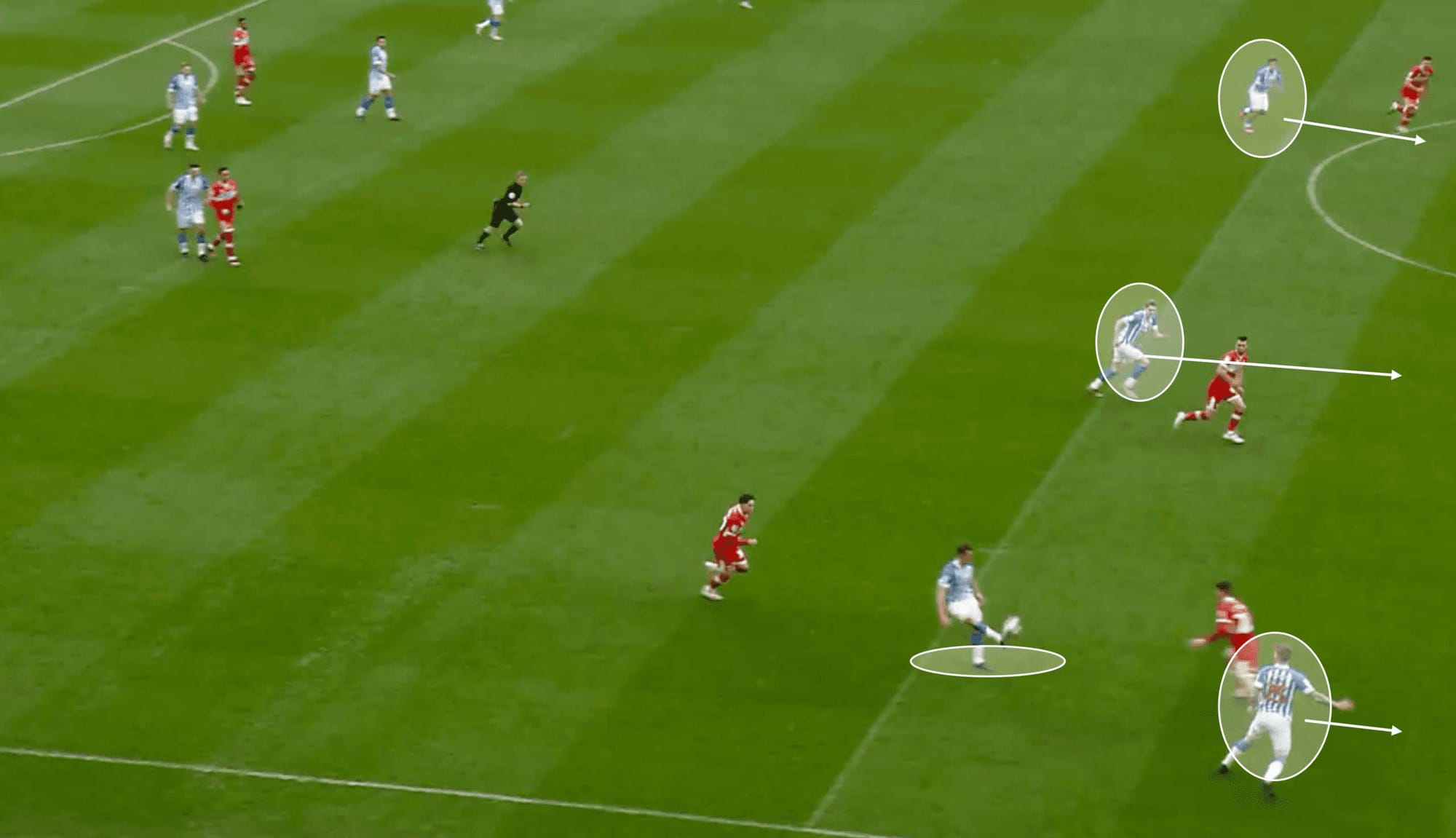
This example occurred in the monumental win over play-off hopefuls Middlesborough and showcases the work that Warnock has done to help his players excel in these situations. Following some good wide pressure, Huddersfield stole the ball, and instantly the attacking players showed the desire to get forward. Both wingers started to make bursts forward, as too does the attacking midfielder and striker; the man on the ball simply looks to move it forward ASAP.
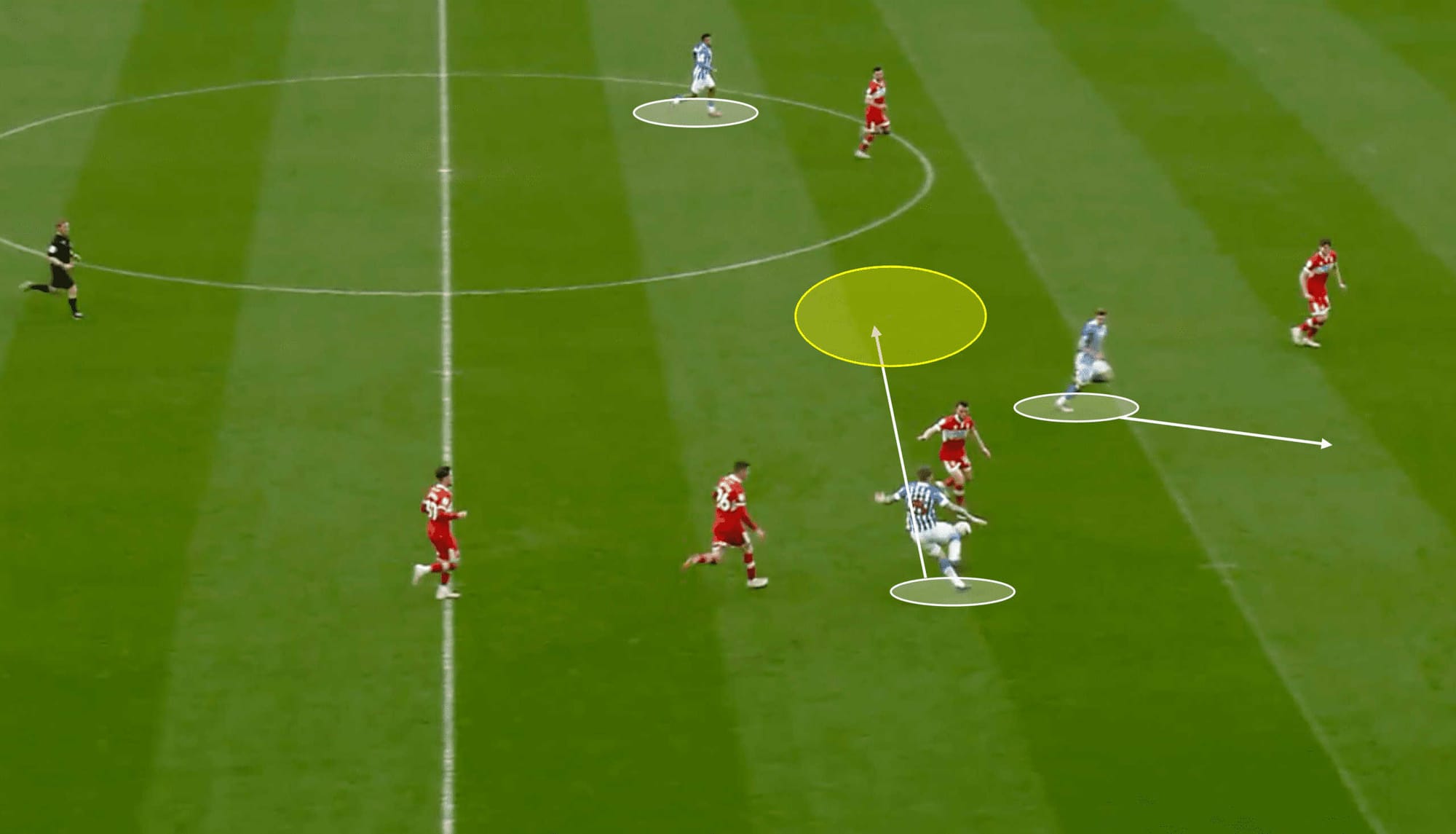
Off-the-ball movements also come into play and have an important role in Huddersfield’s tactics in these areas. Above, you can see the central man, is making a forward run in a slightly off-central direction. Not only does this give the man on the ball another passing option, but it also acts as a decoy, creating space in central areas for Danny Ward to carry the ball into. Exploiting spaces like this is an important part of their tactics, and they do so to good effect.
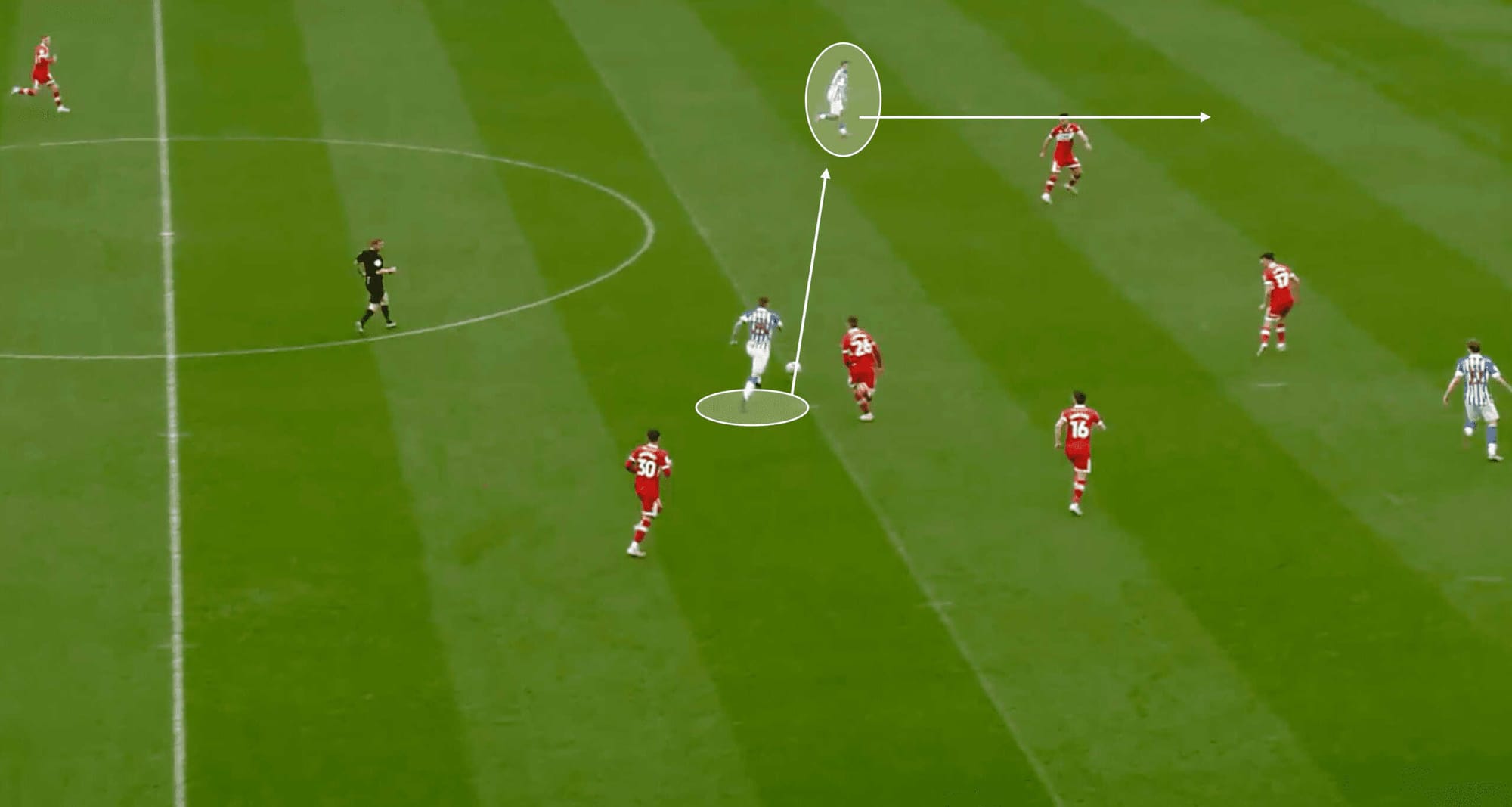
Ward displays a good physical skill set as well as strong technical attributes to get past the swarm of red shirts, breaking free into central space and maintaining the attack’s pace. In these situations, quick thinking and confidence in decision-making is vital, and we see that regularly now from Warnock’s men.
Ward shows that here, wasting no time in moving the ball out to his wide teammate in Josh Koroma. Koroma collects the ball and immediately shows attacking intent, beating his man before slotting the ball home. A move that uses few touches per player, quick decision making and quick acting with pure attacking intent – that’s Huddersfield in attacking transitions in a nutshell lately.
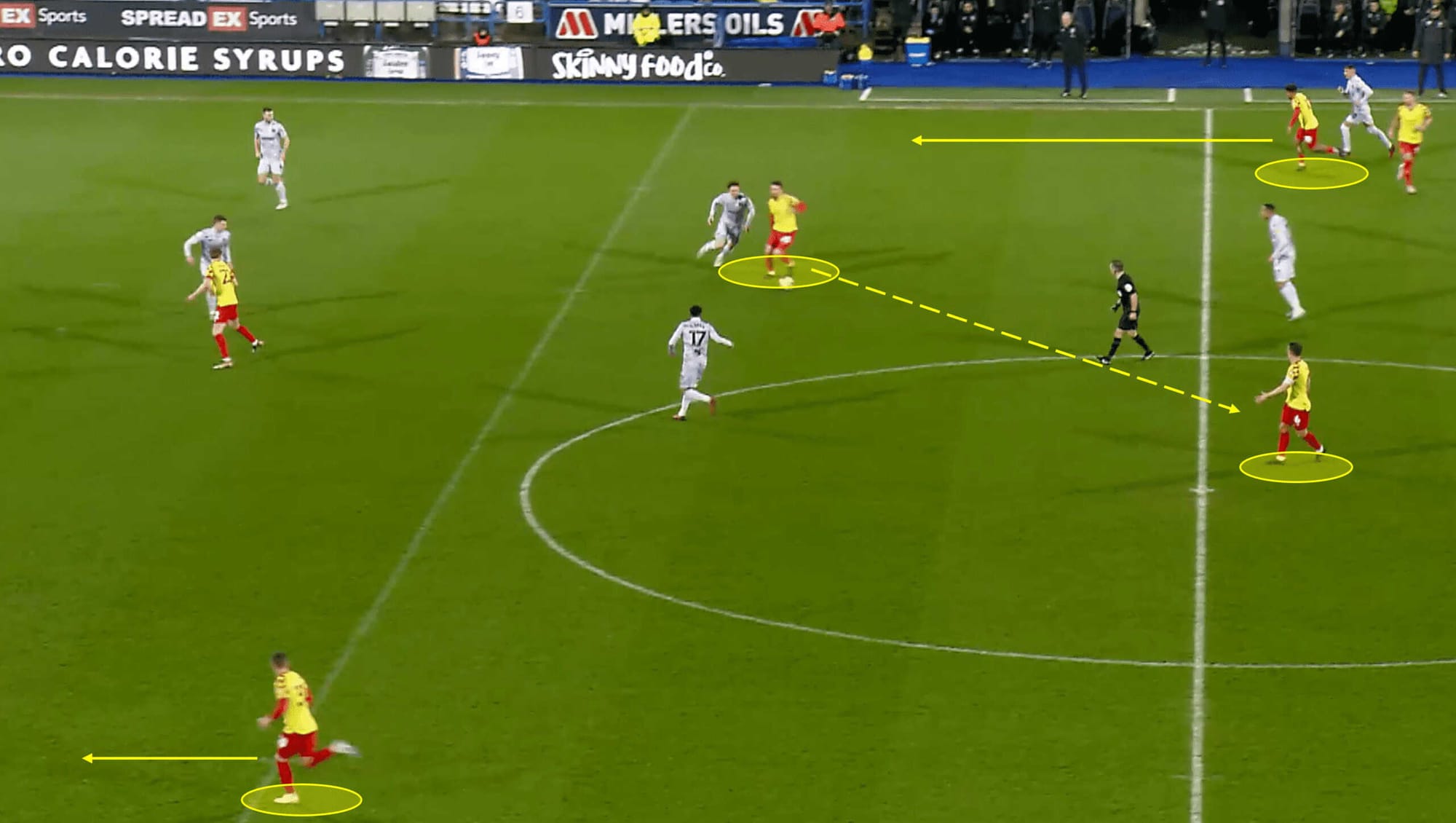
This example demonstrates a maturity and tactically aware side to Huddersfield’s approach. After winning the ball in the middle third, naturally, the usual players i.e. wingers start to make bursting runs forward in an attempt to launch the transitional attack. However, this time we see a backward pass into the midfielder in acres of space, who opts to play another backward pass to his teammate in defence.
This may seem like a negative move at face value, but it allowed Huddersfield to try and build some possession and give their defence a rest. This was aided by the runs of the midfielders and wingers, as their movements forced the opponent to drop deeper to mark them.
Statistical overview
As mentioned, Huddersfield are currently on an impressive unbeaten run of five games – picking up points against the likes of Blackburn Rovers, Millwall, and Middlesborough – all of whom currently occupy a play-off spot. We have decided to look at the numbers behind this dazzling patch of form, pitting it against Fotheringham’s final five games at the helm.
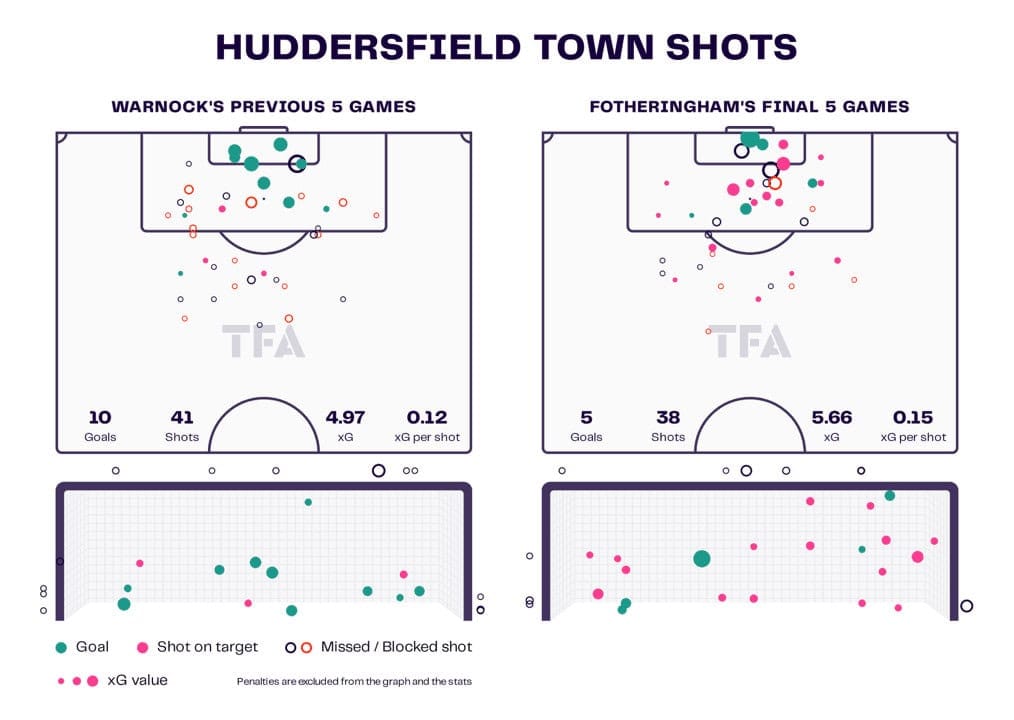
Despite expecting to see drastic differences when it came to the data side of things, the truth is that Warnock’s most recent five games were not all that different from Fotheringham’s final five. In terms of attack, the results are still positive, though – twice as many goals in Warnock’s five, from just three shots more. Interestingly, Town recorded more xG in Fotheringham’s final five games but underperformed their xG, whereas, under Warnock, the Terriers really do overperform it.
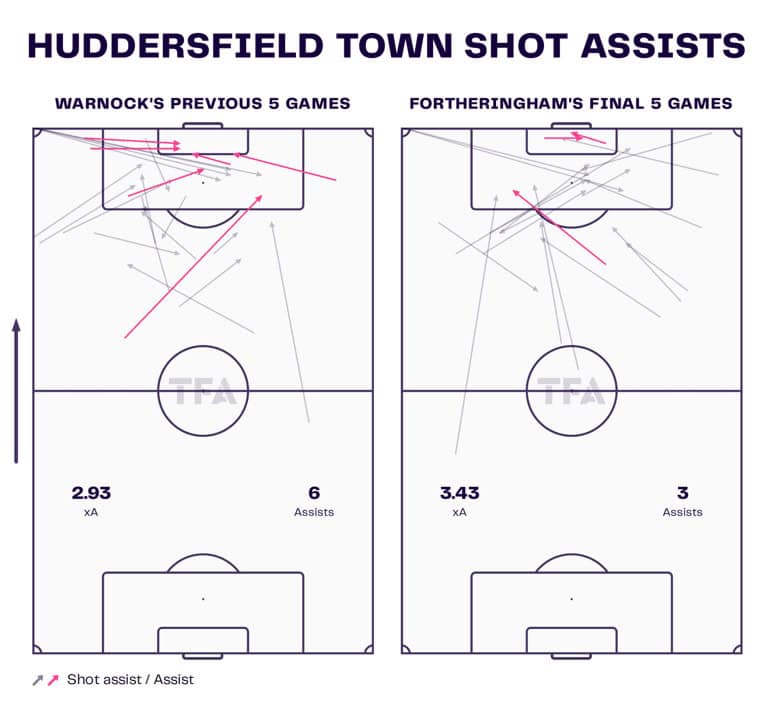
In terms of chance creation, again we see that in Fotheringham’s final five Huddersfield racked up a higher xA but recorded half the number of assists registered by Warnock’s men. The location of the assists under Warnock is also interesting – improvements in attack mean that they now create more chances from in and around the box & near the byline.
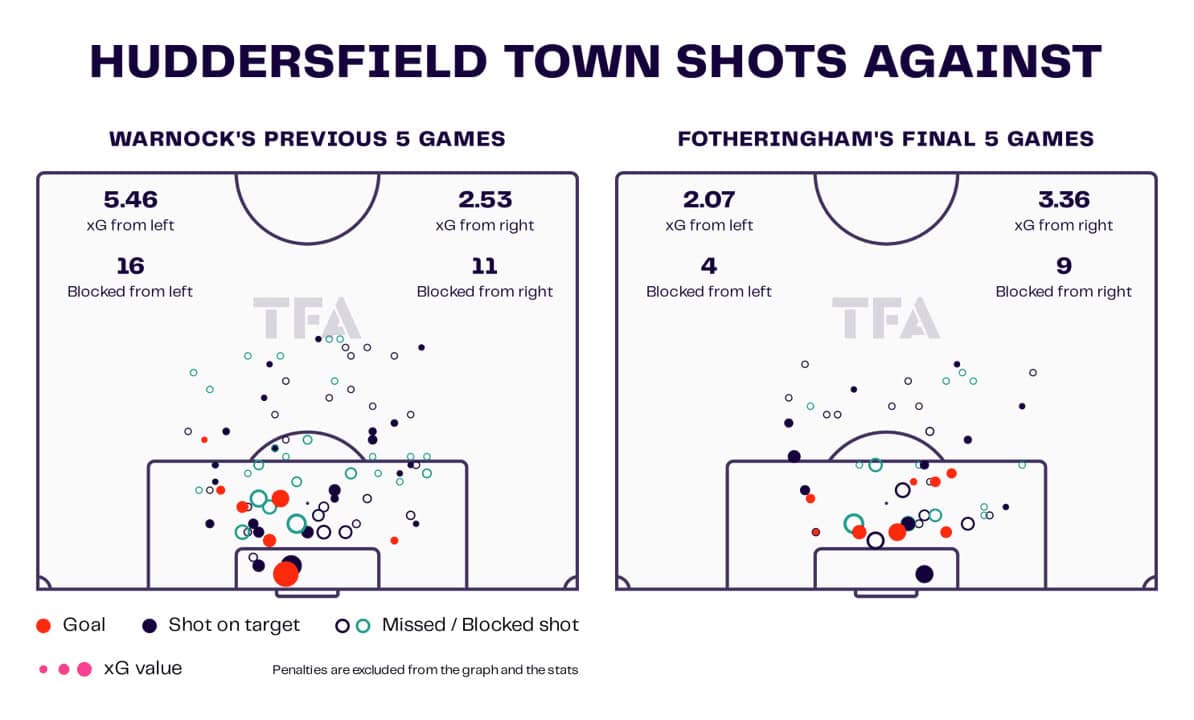
We mentioned earlier that defensively, Huddersfield are yet to turn a corner. Early into his reign, Warnock suffered two 4-0 defeats, and even in this five-game unbeaten run, the last three games has seen them concede two goals, suggesting an inconsistency out of possession. In this five-game period, Huddersfield have conceded seven goals, which is reflected in the xG from both flanks – but they have also improved the number of blocked shots as well, indicating that they have increased their defensive confidence.
Conclusion
Huddersfield are still in a relegation battle, but they are in much better shape now thanks to the turnaround provided by Neil Warnock. Never one to come in and completely change the tactical outlook of a club, Warnock seems to have set out to get the basics right and make the key moments count.
Their defending still could be their own downfall come the end of the season, but their recent eye for goal will be the thing that saves them from the drop if they make it.





Comments